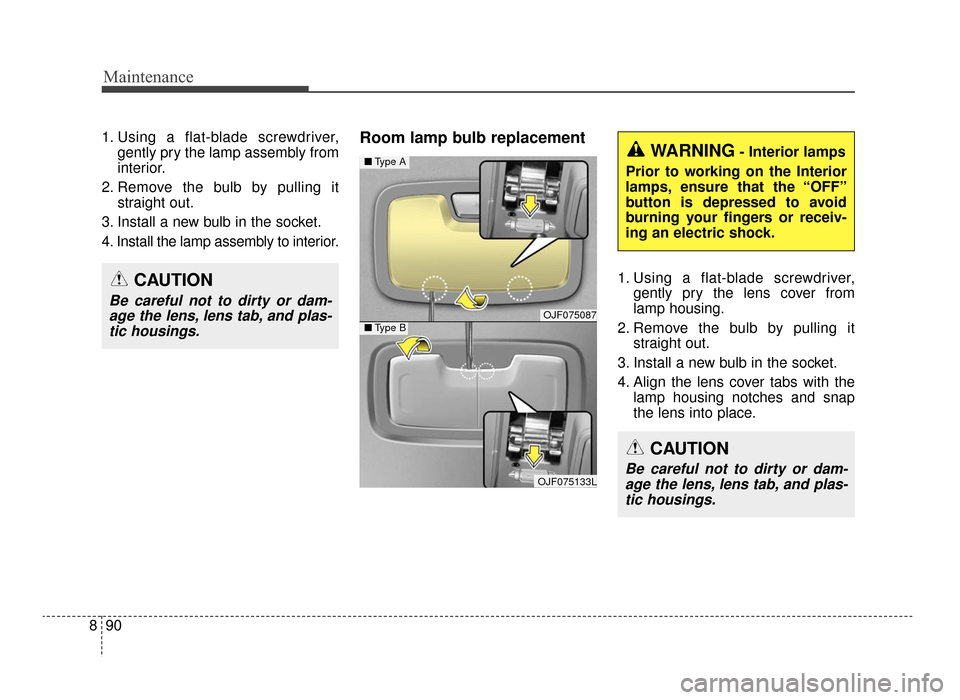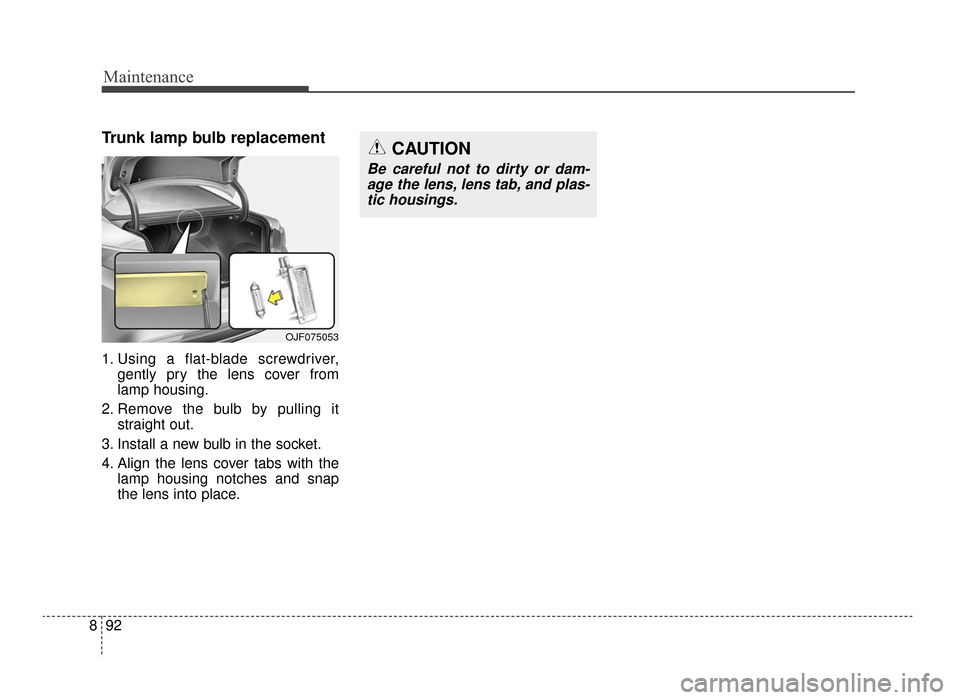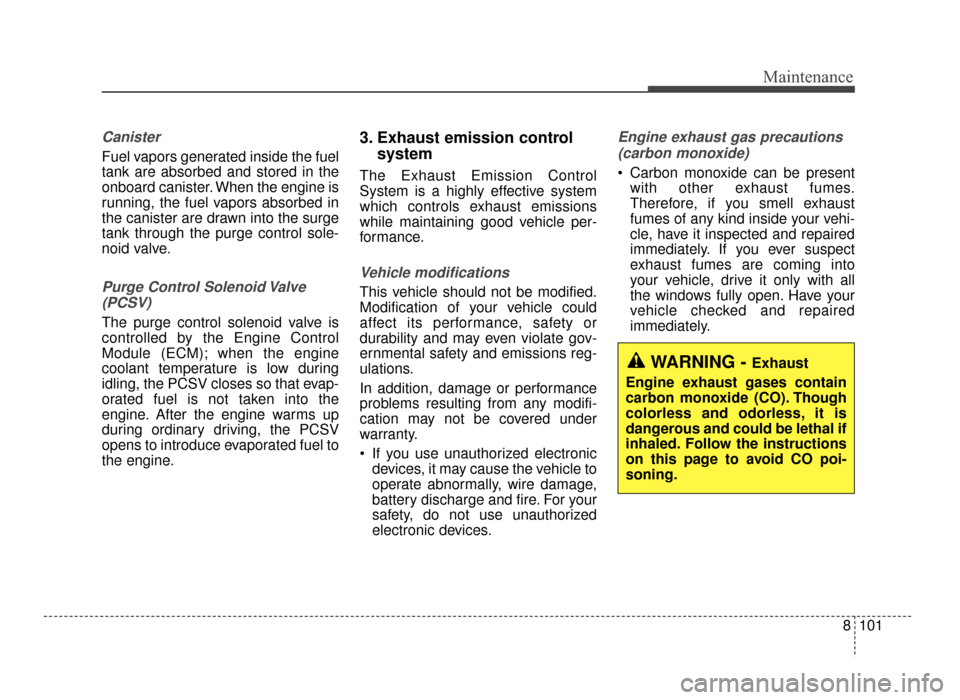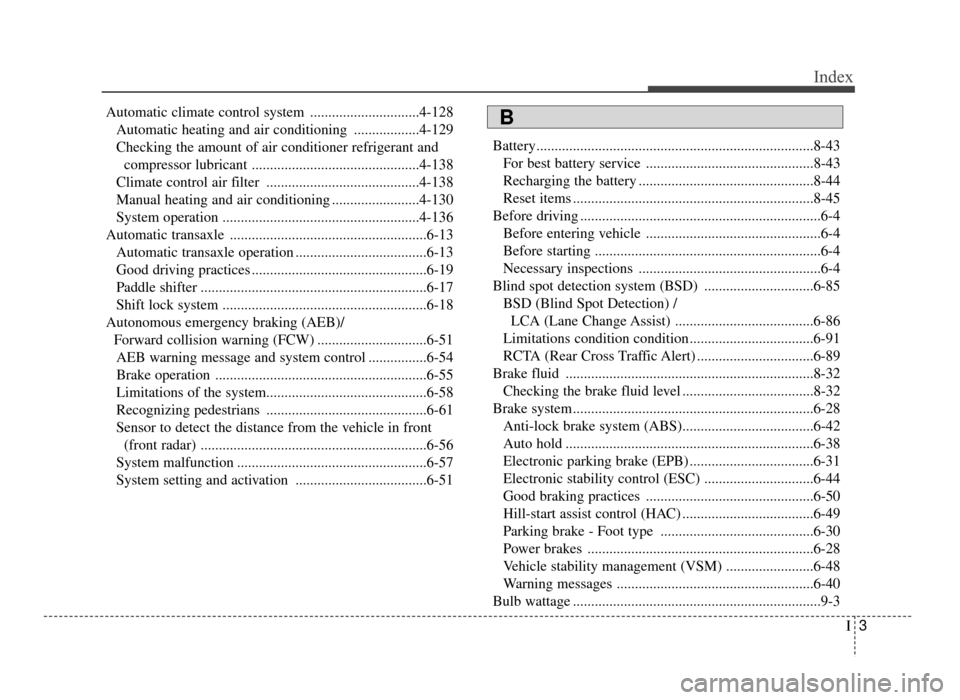ABS KIA Optima 2016 4.G Owner's Guide
[x] Cancel search | Manufacturer: KIA, Model Year: 2016, Model line: Optima, Model: KIA Optima 2016 4.GPages: 623, PDF Size: 15.4 MB
Page 589 of 623

Maintenance
90
8
1. Using a flat-blade screwdriver,
gently pry the lamp assembly from
interior.
2. Remove the bulb by pulling it straight out.
3. Install a new bulb in the socket.
4. Install the lamp assembly to interior.Room lamp bulb replacement
1. Using a flat-blade screwdriver, gently pry the lens cover from
lamp housing.
2. Remove the bulb by pulling it straight out.
3. Install a new bulb in the socket.
4. Align the lens cover tabs with the lamp housing notches and snap
the lens into place.CAUTION
Be careful not to dirty or dam-age the lens, lens tab, and plas-tic housings.
WARNING- Interior lamps
Prior to working on the Interior
lamps, ensure that the “OFF”
button is depressed to avoid
burning your fingers or receiv-
ing an electric shock.
CAUTION
Be careful not to dirty or dam- age the lens, lens tab, and plas-tic housings.
OJF075087
OJF075133L
■ Type A
■Type B
JF CAN (ENG) 8.qxp 11/5/2015 6:41 PM Page 90
Page 591 of 623

Maintenance
92
8
Trunk lamp bulb replacement
1. Using a flat-blade screwdriver,
gently pry the lens cover from
lamp housing.
2. Remove the bulb by pulling it straight out.
3. Install a new bulb in the socket.
4. Align the lens cover tabs with the lamp housing notches and snap
the lens into place.
OJF075053
CAUTION
Be careful not to dirty or dam-age the lens, lens tab, and plas-tic housings.
JF CAN (ENG) 8.qxp 11/5/2015 6:41 PM Page 92
Page 600 of 623

8101
Maintenance
Canister
Fuel vapors generated inside the fuel
tank are absorbed and stored in the
onboard canister. When the engine is
running, the fuel vapors absorbed in
the canister are drawn into the surge
tank through the purge control sole-
noid valve.
Purge Control Solenoid Valve(PCSV)
The purge control solenoid valve is
controlled by the Engine Control
Module (ECM); when the engine
coolant temperature is low during
idling, the PCSV closes so that evap-
orated fuel is not taken into the
engine. After the engine warms up
during ordinary driving, the PCSV
opens to introduce evaporated fuel to
the engine.
3. Exhaust emission control system
The Exhaust Emission Control
System is a highly effective system
which controls exhaust emissions
while maintaining good vehicle per-
formance.
Vehicle modifications
This vehicle should not be modified.
Modification of your vehicle could
affect its performance, safety or
durability and may even violate gov-
ernmental safety and emissions reg-
ulations.
In addition, damage or performance
problems resulting from any modifi-
cation may not be covered under
warranty.
If you use unauthorized electronic
devices, it may cause the vehicle to
operate abnormally, wire damage,
battery discharge and fire. For your
safety, do not use unauthorized
electronic devices.
Engine exhaust gas precautions
(carbon monoxide)
Carbon monoxide can be present with other exhaust fumes.
Therefore, if you smell exhaust
fumes of any kind inside your vehi-
cle, have it inspected and repaired
immediately. If you ever suspect
exhaust fumes are coming into
your vehicle, drive it only with all
the windows fully open. Have your
vehicle checked and repaired
immediately.
WARNING - Exhaust
Engine exhaust gases contain
carbon monoxide (CO). Though
colorless and odorless, it is
dangerous and could be lethal if
inhaled. Follow the instructions
on this page to avoid CO poi-
soning.
JF CAN (ENG) 8.qxp 11/5/2015 6:41 PM Page 101
Page 615 of 623

I3
Index
Automatic climate control system ..............................4-128Automatic heating and air conditioning ..................4-129
Checking the amount of air conditioner refrigerant and compressor lubricant ..............................................4-138
Climate control air filter ..........................................4-138
Manual heating and air conditioning ........................4-130
System operation ......................................................4-136
Automatic transaxle ......................................................6-13 Automatic transaxle operation ....................................6-13
Good driving practices ................................................6-19
Paddle shifter ..............................................................6-17
Shift lock system ........................................................6-18
Autonomous emergency braking (AEB)/ Forward collision warning (FCW) ..............................6-51AEB warning message and system control ................6-54
Brake operation ..........................................................6-55
Limitations of the system............................................6-5\
8
Recognizing pedestrians ............................................6-61
Sensor to detect the distance from the vehicle in front (front radar) ..............................................................6-56
System malfunction ....................................................6-57
System setting and activation ....................................6-51 Battery........................................................................\
....8-43
For best battery service ..............................................8-43
Recharging the battery ................................................8-44
Reset items ..................................................................8-45
Before driving ..................................................................6-4 Before entering vehicle ................................................6-4
Before starting ..............................................................6-4
Necessary inspections ..................................................6-4
Blind spot detection system (BSD) ..............................6-85 BSD (Blind Spot Detection) / LCA (Lane Change Assist) ......................................6-86
Limitations condition condition ..................................6-91
RCTA (Rear Cross Traffic Alert) ................................6-89
Brake fluid ....................................................................8-32\
Checking the brake fluid level ....................................8-32
Brake system..................................................................6-28 Anti-lock brake system (ABS)....................................6-42
Auto hold ....................................................................6-38\
Electronic parking brake (EPB) ..................................6-31
Electronic stability control (ESC) ..............................6-44
Good braking practices ..............................................6-50
Hill-start assist control (HAC) ....................................6-49
Parking brake - Foot type ..........................................6-30
Power brakes ..............................................................6-28
Vehicle stability management (VSM) ........................6-48
Warning messages ......................................................6-40
Bulb wattage ....................................................................9-3B
JF CAN (ENG) Index.qxp 9/23/2015 4:32 PM Page 3